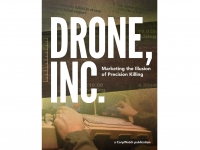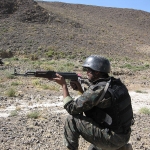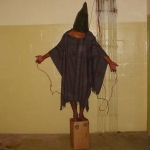Drone, Inc. - Question the Numbers

Less than a fortnight after Donald Trump took office as president, the U.S. launched a major helicopter raid in Yemen, followed by a barrage of 70 drone-led air strikes over the course of five weeks.1
In the first three months of 2017, such drone attacks killed as many as 70 people, including an estimated dozen children and a three- month-old baby.2
The numbers are not different from previous years; nor are they less precise. Such numbers suggest that intelligence failures intrinsic to the drone war have routinely resulted in a serious toll of civilian casualties.
DRONE, Inc.: Marketing the Illusion of Precision Killing is the story of the unmanned aerial surveillance platforms used to plan many capture/kill military operations today. They employ hardware such as cameras and phone trackers, software for identifying targets; and contractors who supply and support the technology.
In July 2016, the Obama administration released a report claiming that drone strikes and related counterterrorism operations killed 2,581 individ- uals in countries where the U.S. is not officially at war. The White House admitted that between 64 and 116 of this number were innocent civilians.3
Yet the Bureau of Investigative Journalism, a U.K.- based nonprofit media organization which keeps a regular tally, estimates that as many as one in five drone victims has been a civilian.4 Prominent human rights organizations like Amnesty International and Human Rights Watch have documented dozens of on-the-ground, examples of victims not included in the official U.S. figures.5
One internal Pentagon study showed that civilians were killed or wounded in 21 specific strikes in Afghanistan, despite the fact that in 19 of those 21 cases, preliminary evaluations conducted via drone cameras identified not even one civilian casualty.6
That’s not all. “These ‘high value targets’ appear to be doing the impossible—dying not once, not twice, but as many as six times,” said Jennifer Gibson, staff attorney at Reprieve, a U.K. human rights organization.7
How can there be such wide discrepancies between the official count and those of inde- pendent observers and insiders? The Obama administration’s July report contains a clue:8
Government post-strike reviews involve the collection and analysis of multiple sources of intelligence before, during, and after a strike, including video observations, human sources and assets, signals intelligence, geospatial intelligence, accounts from local officials on the ground, and open source reporting.
Drone, Inc. explains why those “video observations, signals intelligence, geospatial intelligence” make major mistakes. After analyzing Freedom of Information Act requests, locating previously unpublished court documents, reviewing dozens of engineering and technical studies, and crunching contract data, a different picture emerges: Planning for drone operations was handicapped by a fog of numbers and raw data derived from flawed technology marketed by contractors, the military and the intelligence agencies. Indeed, because of erroneous assumptions about these new technologies and a failure to properly evaluate ongoing operations, the U.S.—under Obama and now Trump—is conducting a deeply inaccurate remotely controlled war.
Report Index • Download Report • FAQ/Press Materials • Watch Video • Next >



